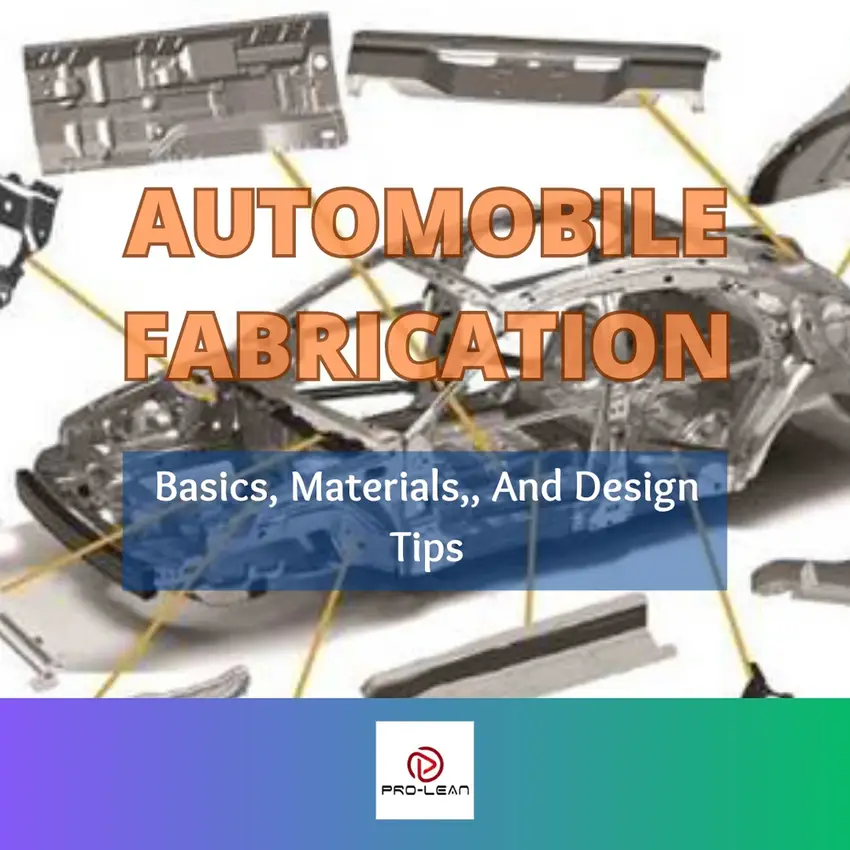
Automobile fabrication
Automobile fabrication, the process of using high precision methods to cut, form, join, and assemble pieces of different materials into larger components, is a force behind the growth and advancement of the industry. It is a major space encompassing suppliers and manufacturers within the motorbike, car, bus, and truck segments.
This manufacturing approach has transformed from earlier years, now involving a wide range of technologies, from CNC machining to pressing, adhesive bonding to High-Strength Steel (HSS) & AHSS, and TIG Welding (GTAW) to laser cutting.
Understanding all the dynamics of automobile fabrication and partnering with a professional fabrication team is the key to ensuring strong and reliable fabricated parts, whether you are a manufacturer or supplier.
The quality sheet metal, tubes, rods, engine blocks, and extrusions in automobiles have all been subjected to one form of fabrication or another, so the efforts to get it all right are worthwhile.
In this article, we review the basics of automobile fabrication, covering the different techniques applied, material options and quality standards. Read on for details.
What Is Fabrication In Automotive?
Automobile fabrication is a manufacturing method or process entailing cutting, shaping, and assembly of metal and non-metallic components for different sections of automobiles.
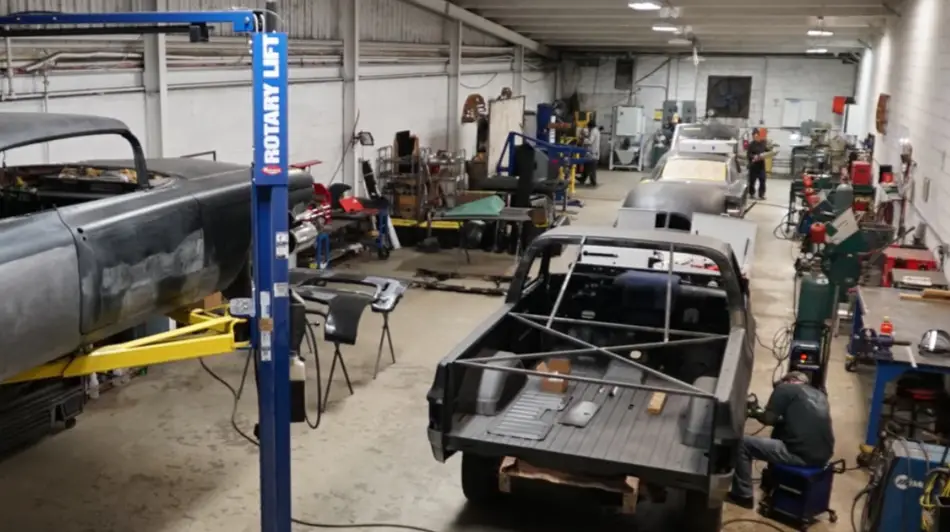
A car fabrication workshop
This transformation of raw and semi-finished materials is doable in both original equipment manufacturing and custom fabrication setups. The best providers such as ProleanTech use advanced fabrication techniques like laser cutting, sheet metal shearing, and metal stamping to deliver quality parts for the automotive industry. That is one way how sheet metal is manufactured for this extensive space.
Other core automobile industry manufacturing processes are CNC machining, welding, bending, and forming. Automobile pieces can be fabricated from a wide range of materials, including aluminum alloys and high-strength steel, as will be expounded later in the article.
Why Is Automobile Fabrication Crucial For The Automobile Industry?
Automotive sheet metal fabrication process is necessary because this technique produces functional and strong parts that enhance the aesthetics, safety, and performance requirements of the car.
Automobile manufacturers achieve this by using advanced CNC manufacturing technologies that are capable of matching requirements to the last detail.
Custom Parts Manufacturing
With automobile fabrication, manufacturers can develop parts that are not normally possible with standard approaches. Such is in projects for enhancing car aesthetics, performance, and durability.
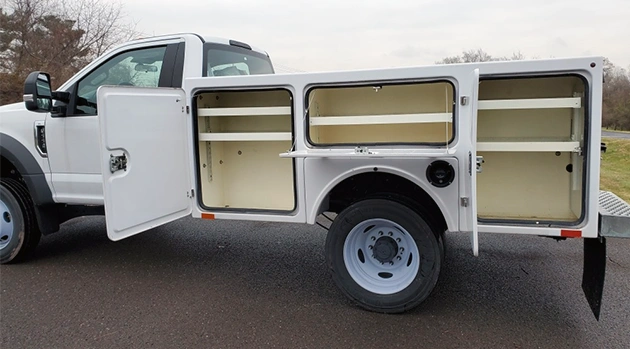
Custom fabricated truck
custom sheet metal fabrication for cars is prominent in these types of projects:
- Electric car startups
- Car prototyping
- Aftermarket tuning workshops
- Offroad SUVs
- Specialty car production
- Racing cars
Sustainable Manufacturing
Like other core industries, the automobile industry has been prompted to seek more sustainable eco-friendly manufacturing methods. Automotive sheet metal fabrication is one of the effective ways to promote the agenda for Earth-friendly manufacturing.
Metal fabrication aligns with these goals by promoting recycling and cost-effective utilization of resources. The aspect using materials with high strength-to-weight ratio is also addressed, with aluminum alloys and advanced high-strength steel (AHSS) being used for this reason.
Cost-effective High-Volume Production
Talking of cost-effectiveness, CNC machining, stamping, and other metal fabrication technologies are some of the most cost-effective manufacturing methods. When used for high-volume manufacturing, which is possible, the results are even more incredible.
Instead of producing one car part individually, metal fabrication enables for the simultaneous manufacture of thousands of pieces without accuracy or quality loss.
Summary Of The Relevance Of Automobile Fabrication
Without accurate and professional fabrication that creates rigid and structurally sound components, the everyday use of cars would be impossible. Indeed, this pillar of the automobile industry manufacturing process is critical in the following ways;
- Affects fit and precision
- Lightweight fabrication materials are critical in weight optimization
- Defines the automobile body and chassis
- Supports the integration of advanced features such as aerodynamics for performance and safety
- Minimizes production costs through mass manufacturing
- Enhances automobile design flexibility
Try Prolean Now!
Automobile Fabrication: Cutting Techniques With Best Results
Cutting techniques in automobile fabrication are designed to create precise dimensions and shapes from metal profiles and sheets. This is where waterjet cutting, laser cutting, shearing, and plasma cutting come in.
Each of these cutting technologies has advantages and drawbacks, which should be considered keenly depending on what the cutting process is intending to achieve. The following table summarizes a comparison of these techniques.
| Cutting method | Recommended material thickness (mm) | Precision (mm) | Ideal Application |
| CNC punching | 0.5-6 | ±0.2 | High manufacture of repeatable parts |
| Laser cutting | 0.5-20 | ±0.1 | Complex detailed shapes |
| Plasma cutting | 3-50 | ±0.5 | Thicker metal parts |
| Waterjet cutting | 0.5-100 | ±0.2 | Thick but heat sensitive parts |
Automobile Fabrication: Joining Techniques For The Best Results
Joining is a major component of automobile fabrication, helping join components to create essential assemblies for the industry. Adhesive bonding, welding, riveting, and bolting are effective joining techniques that manufacturers extensively use.
Automobile Welding
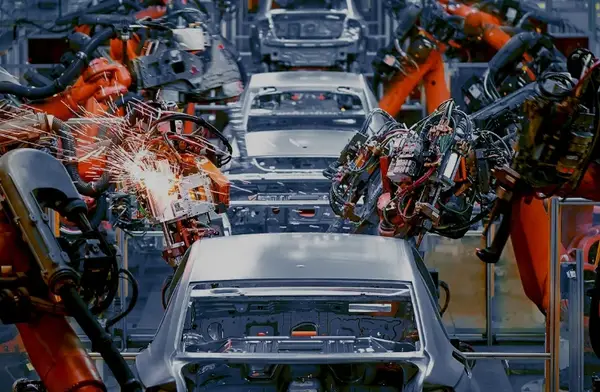
Automobile welding
Welding is instrumental in automobile fabrication for parts that must withstand tear and wear. It entails using heat and pressure to join different parts of the automobile. Some common welding options for the industry are spot welding, arc welding, and resistance welding.
Here’s how each of these is relevant to the production process:
Arc welding – Strong joints
This type of welding uses an electric arc that melts and joins metals. The arc is generated from a DC or AC power supply and the heat created is in the range of 6500°F. Arc welding is in different forms, categorized as either consumable electrode methods and non-consumable electrode methods.
Consumable electrode methods include Metal Inert Gas Welding (MIG), Metal Active Gas Welding (MAG), Shielded Metal Arc Welding (SMAW), and Flux Cored Arc Welding (FCAW). Others are Submerged Arc Welding (SAW), Electro-Slag Welding (ESW), and Arc Stud Welding (SW).
The most common non-consumable electrode methods are Tungsten Inert Gas Welding (TIG) and Plasma Arc Welding (PAW).
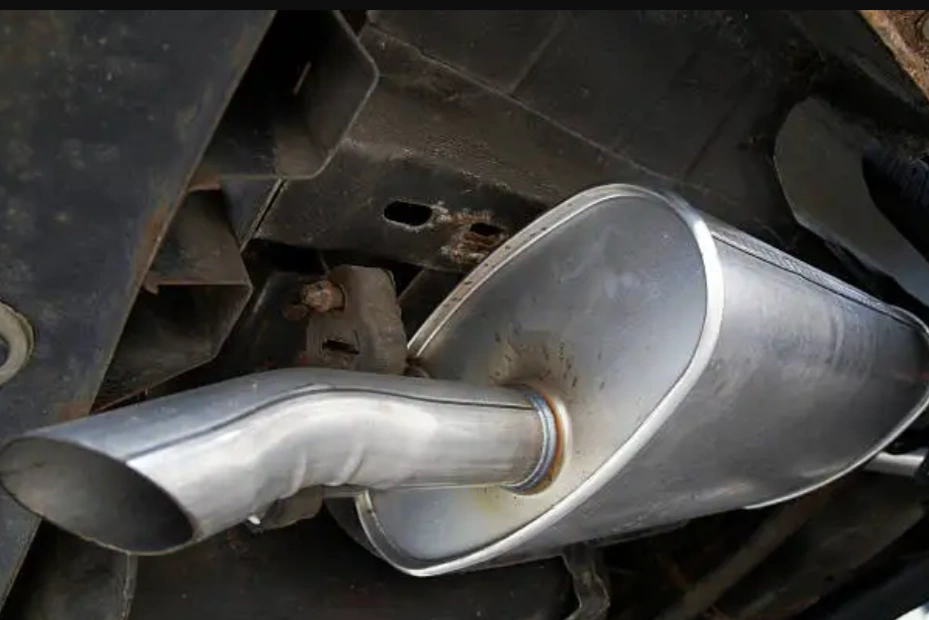
A MIG weld
TIG Welding – Precise, clean welds
TIG welding, full name Tungsten inert gas welding, is a joining method in automotive fabrication that uses an arc produced by a combination of a non-consumable tungsten electrode and filler material.
Resistance welding – High-speed automation
Resistance welding entails conducting a powerful electric current and combining it with pressure to welding metal pieces togethet at localized points. Projection and spot welding are in this category.
Spot welding is a recognizable form of resistance welding. It is a traditional metal joining technique that applies heat and pressure to the area being joined. That’s why its second name is resistance spot welding. Note that no filler metal is used in this type of joining. Only electrical current is delivered by alloy copper electrodes.
Laser welding – Highly precise joints
Laser welding involves the generation of a powerful light beam which is controllably focused on one area, resulting in welding. It is a popular joining technique for door frames, chassis, and electronic housings.
Auto manufacturers choose laser welding because it creates a limited heat-affected zone (HAZ) and is more flexible to use than some alternatives.
Automobile Adhesive Bonding
As the name depicts, adhesive bonding is about applying an adhesive on the automobile parts being joined. You will mostly find this fabrication technique where parts of aluminum, high-strength steel, and composites are involved.
As the automotive industry evolves, newer adhesive bonding solutions keep emerging. The latest techniques are specialty adhesives, structural adhesives, and toughened adhesives, all applicable in sheet metal for manufacturing services.
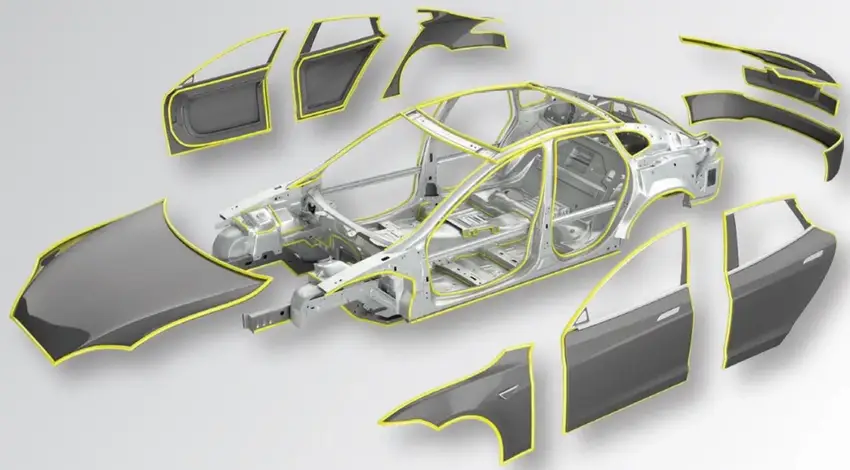
Structural adhesive bonding
Specialty adhesives are ideal for dissimilar materials, structural adhesives help with joining load-bearing components, while toughened adhesives are perfect for absorbing impact and vibration.
Automobile Bolting
Bolts are some of the most prominent fasteners in automobile manufacture. As the undisputed workhorses of this sector, bolts are found in every part of the machines, from the engine to the transmission, and the suspension to the chassis.
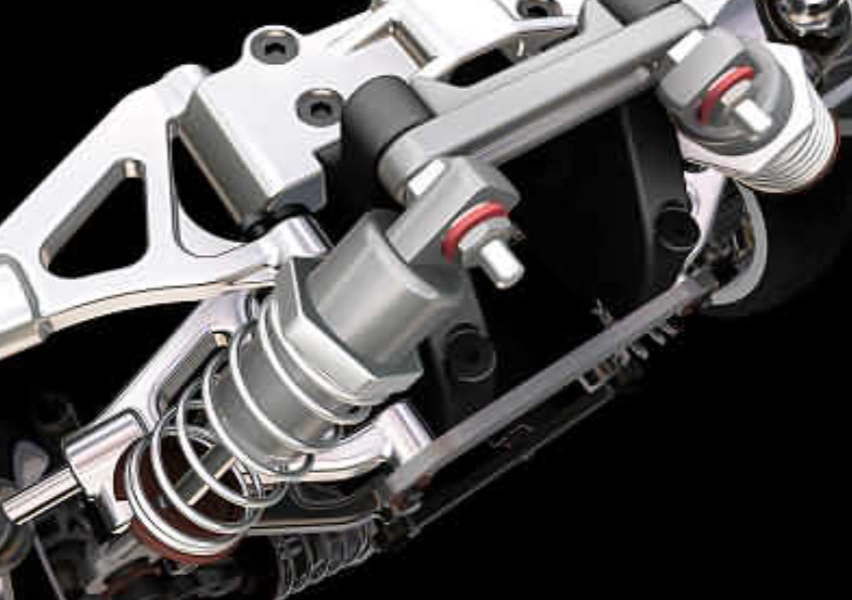
Automobile bolts
Working in tandem with nuts, bolts ensure that parts stay together, especially when used with the right types of washer combinations.
Automobile Riveting
Riveting comes in handy where permanent automobile joints are required. These non-removable joints are common in body panels and brake linings.
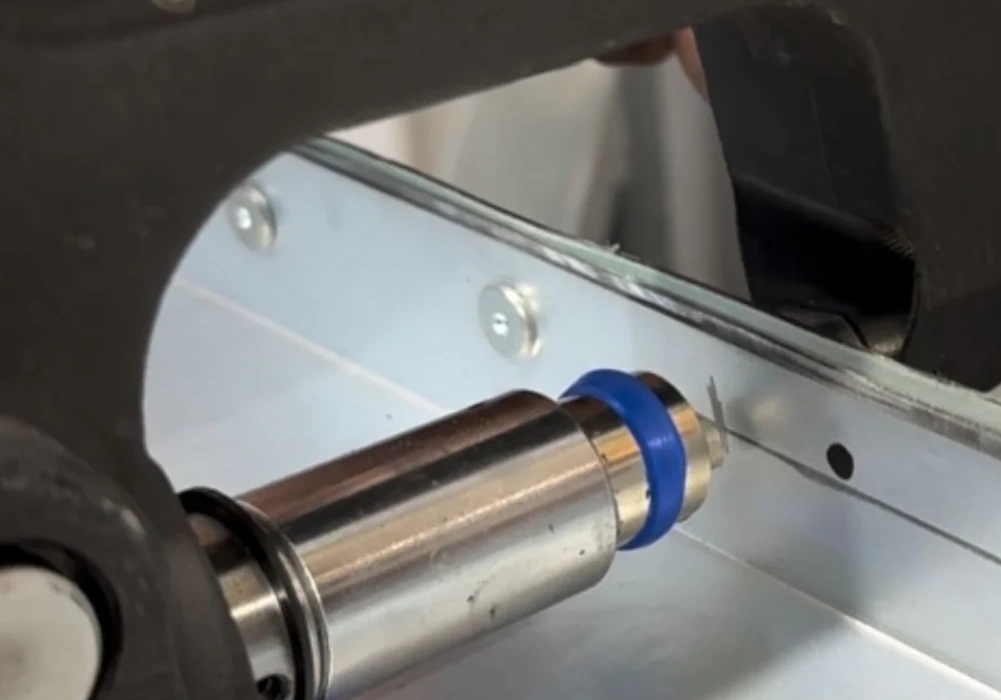
Automobile rivet
Given the many different types of components that require joining in automotive fabrication, you can expect different riveting styles. Indeed, the automotive industry uses a few types including exploding rivets, blind rivets (pop rivets), solid rivets, and structural rivets.
Automobile Fabrication: Forming And Bending Techniques
Forming and bending methods entail shaping metal parts into angles and curves such that there is no material removal or loss. The goal of these methods is to develop parts that are accurate and structurally strong.
Car manufacturers prefer to use advanced techniques such as stamping, roll forming, and press braking to create parts such as frames and brackets, allowing for the manufacture of both complex and standard parts.
Press Brakes
A press brake is a metal sheet fabrication machine comprising a ram, frame, punch, back gauge, and control systems, among other components. These work together to apply force and shape metal.
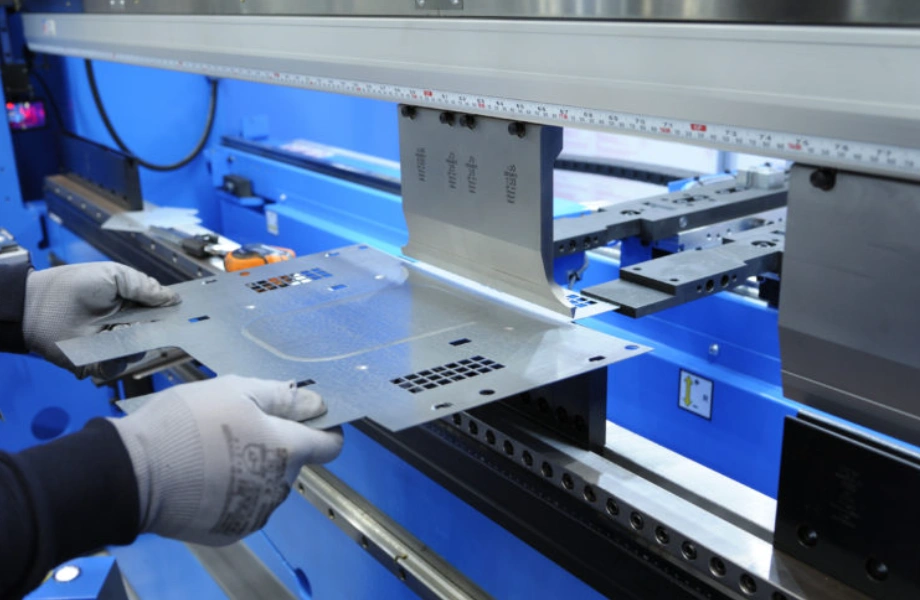
Press brake
In the automobile sector, press brakes are widely used in the cost effective and safe production of body panels, chassis, and different types of brackets.
For more on the bending process, check this complete guide on sheet metal bending.
Roll Forming
This is a manufacturing technique entailing using plastic deformation to produce metal profiles. Automobile manufacturers use this technology to produce roof rails, trunk reinforcements, bumper beams, and cross members, among many other parts.
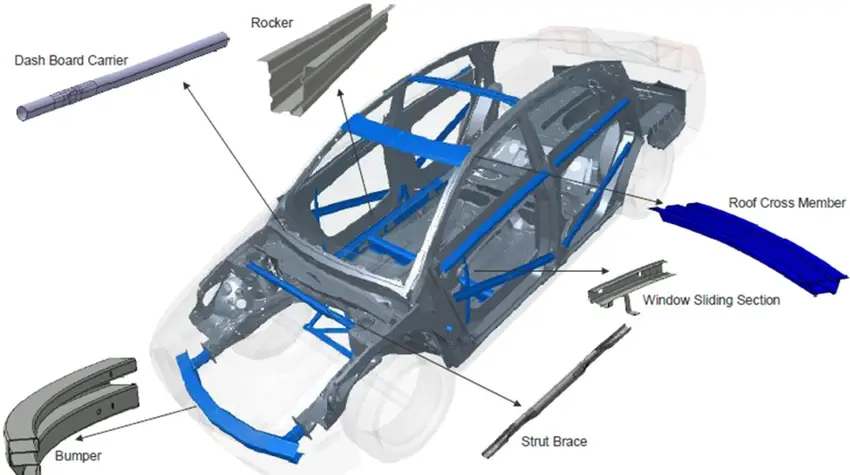
Roll formed parts of a car
Stamping
Stamping is the ideal technique for producing complex geometry parts in automobile fabrication. This method involves a machine called a press, which works with its tool and die combination to transform sheet metal into complex parts.
Stamping is a fundamental concept in bending, blanking, and coining, all of which are types of forming processes under sheet metal fabrication services.
Try Prolean Now!
Material Options In Automobile Fabrication
In automobile fabrication, the machinability, weldability, corrosion resistance, and formability of a material matters. Many materials largely offer these properties, but the specific level and combination of all the desired elements may differ.
With so many material options, a fabricator can be confused which one to use. Apart from steel alloys, aluminum alloys, and other metals from sheet metal manufacturers, there are also non-metals like plastic and ceramic to consider.
These material options for automobile fabrication are captured in the table below:
| Automobile Fabrication Metals | Automobile Fabrication Nonmetals |
|
|
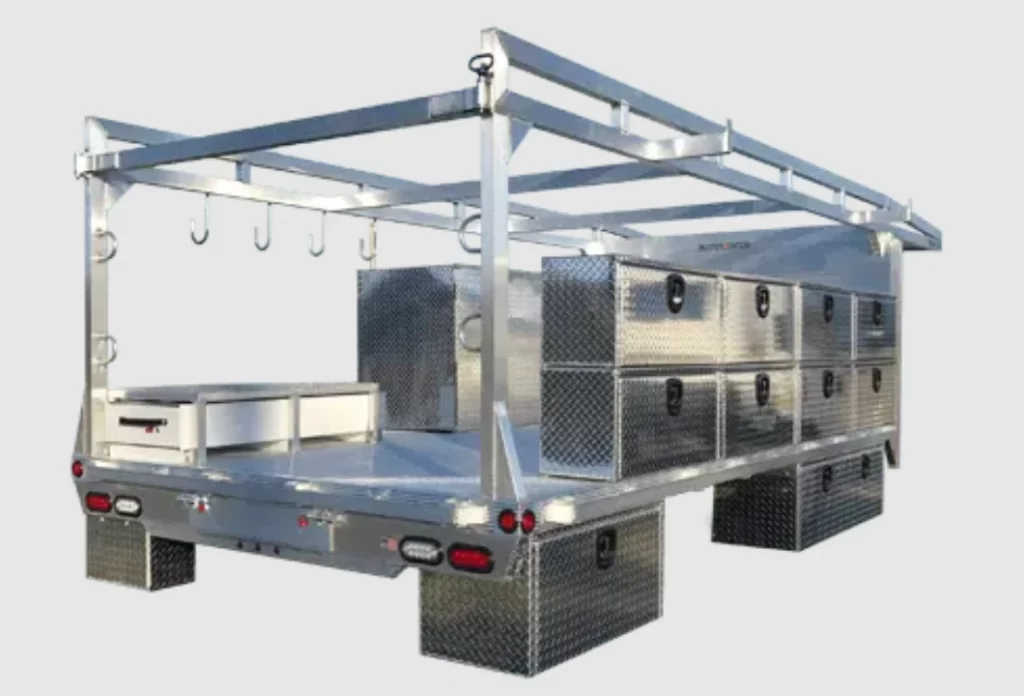
Fabricated aluminum truck body
Quality Standards For Automobile Fabrication
While fabricating all these materials and using the techniques discussed here, the automobile fabrication processes are governed by widely-adopted quality sheet metal design guidelines, the aim being to streamline the sector and ensure safety.
Aspects of fabrication in the industry such as dimensioning, material selection, and heat treatment processes should be based on guidelines like IATF 16949 and ISO 9001.
IATF 16949 Certification
This certification deals with QMS requirements for automobile manufacturers, providing detailed guidance on the tools and requirements to use. It also focuses on defect prevention, waste reduction, and continuous improvement.
ISO 9001 Certification
This automobile fabrication certification is also about continuous improvement, emphasizing on the product and service. Its benefits include helping manufacturers comply with industry standards and regulations, and increasing process efficiency.
Let’s connect with our industry experts today for more on the relevant certifications.
Choosing The Right Automobile Fabrication Partner
Industrial certifications, fabrication technologies, reputation, and expertise – these are some of the major pointers to the kind of automobile fabrication company you are dealing with. There is a lot to say about a bad provider, but it is better to focus on the good partner.
Capability to custom fabricate and adapt to unique designs is a major sign a company is worth working with.
In summary, the requirements of a reliable automobile fabrication team are;
- High experience using automotive grade manufacturing materials
- Has the relevant automotive manufacturing certifications for local and overseas markets
- Specialized expertise in automobile fabrication and knowledge of the latest technological solutions
- Use of advanced machinery for joining, cutting, and forming – the best CNC machining, welding, riveting, forming, bending machines
In Conclusion
The function of automotive sheet metal fabrication is extensive and crucial for durable, reliable, and precise parts. Different sections of the finished product are built using this technology. Undoubtedly, the use of expert automobile fabrication solutions is worthwhile.
At ProleanTech, world-class automobile fabrication solutions are the norm. We combine extensive fabrication expertise with advanced metal fabrication technologies, and base our operations on local and international standards.
Get in contact with our experts today for detailed guidance about our automobile sheet metal fabrication solutions and how they can transform your business. You will also get a custom pricing estimate!
FAQ”s:
What does a car fabricator do?
A car fabricator cuts, joins, and forms car parts for either repairs or manufacture. They use skills and special equipment/tools in their line of work.
Is a fabricator a good job?
Yes, a fabricator is a good job with not only exciting experiences, but also good pay and job security.
What are the three primary types of fabrication?
The three types of fabrication are cutting, forming, and joining.
How long does it take to fabricate a car?
The duration to fabricate a car is a subject of many factors, so it varies greatly. It can be anywhere between several hours for mass production to several years for custom projects.
What is the difference between manufacturer and fabrication?
The difference between manufacturing and fabrication is mainly in the scope. Fabrication is usually a subset of manufacturing, focusing on the formation of individual components. These components are used in the larger manufacturing process, which is complex and all-encompassing.

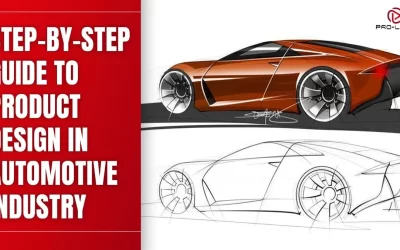
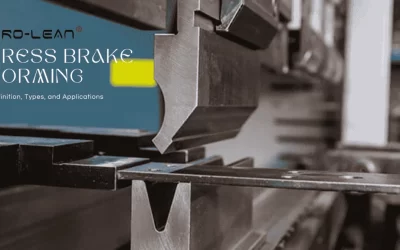
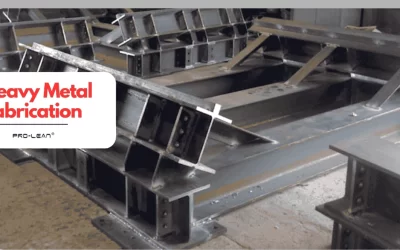
0 Comments